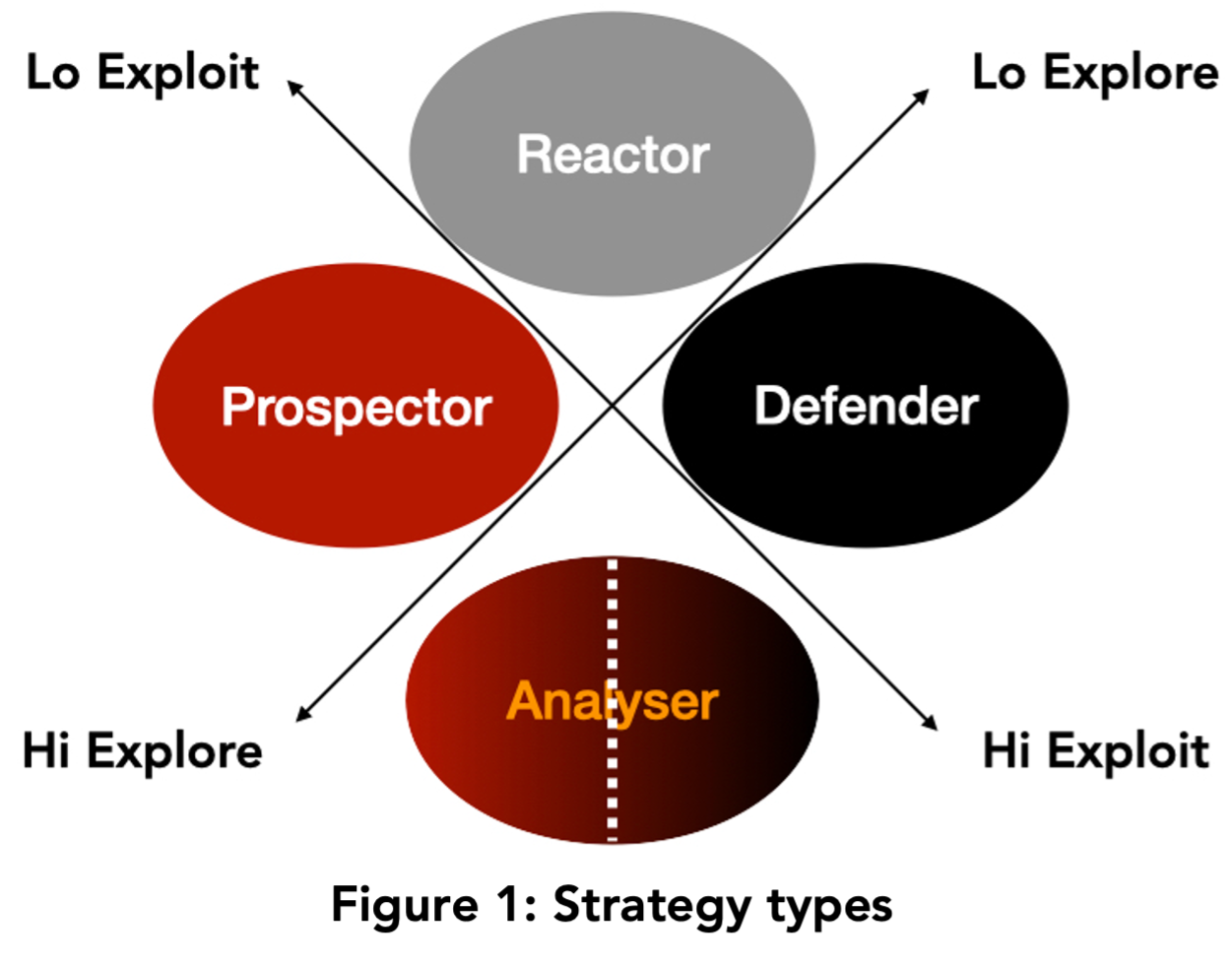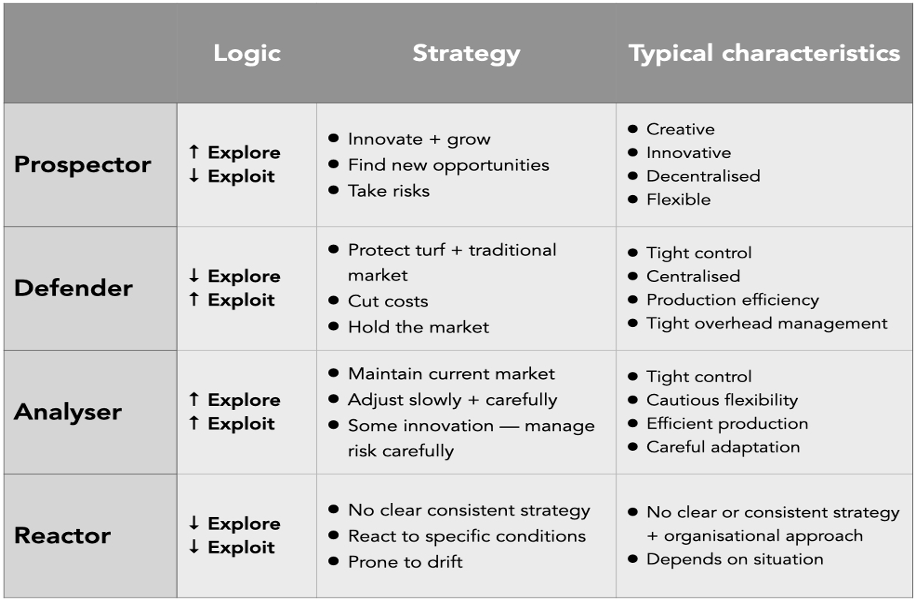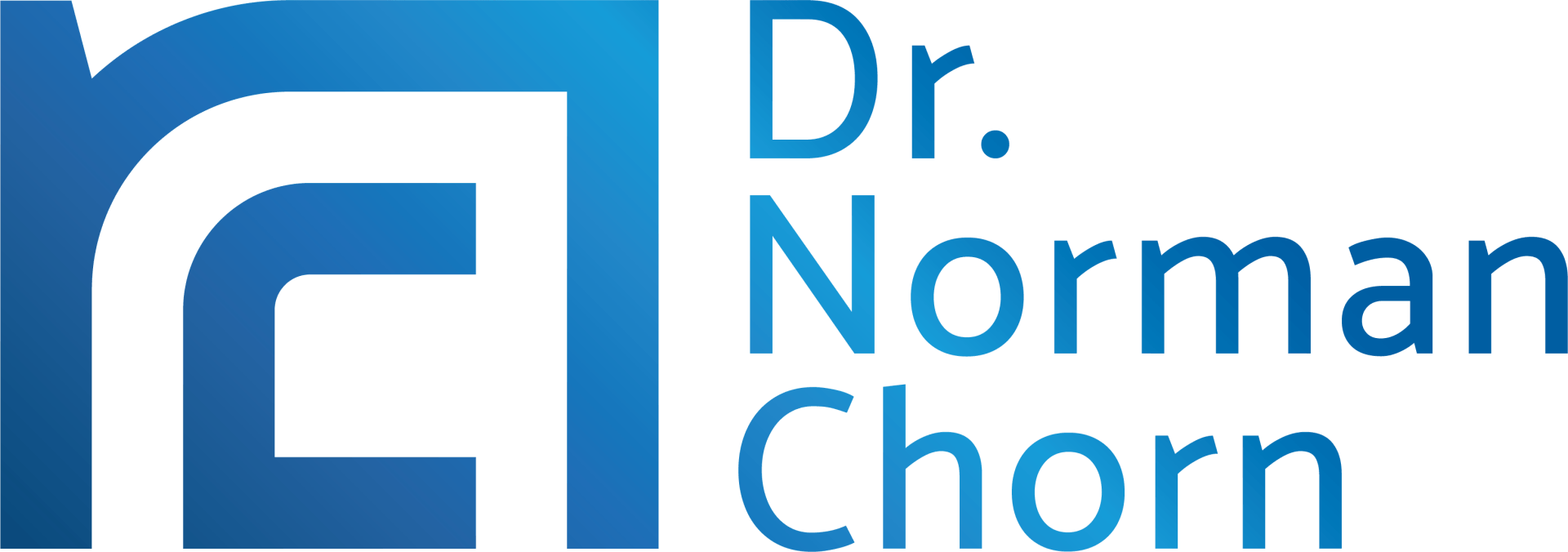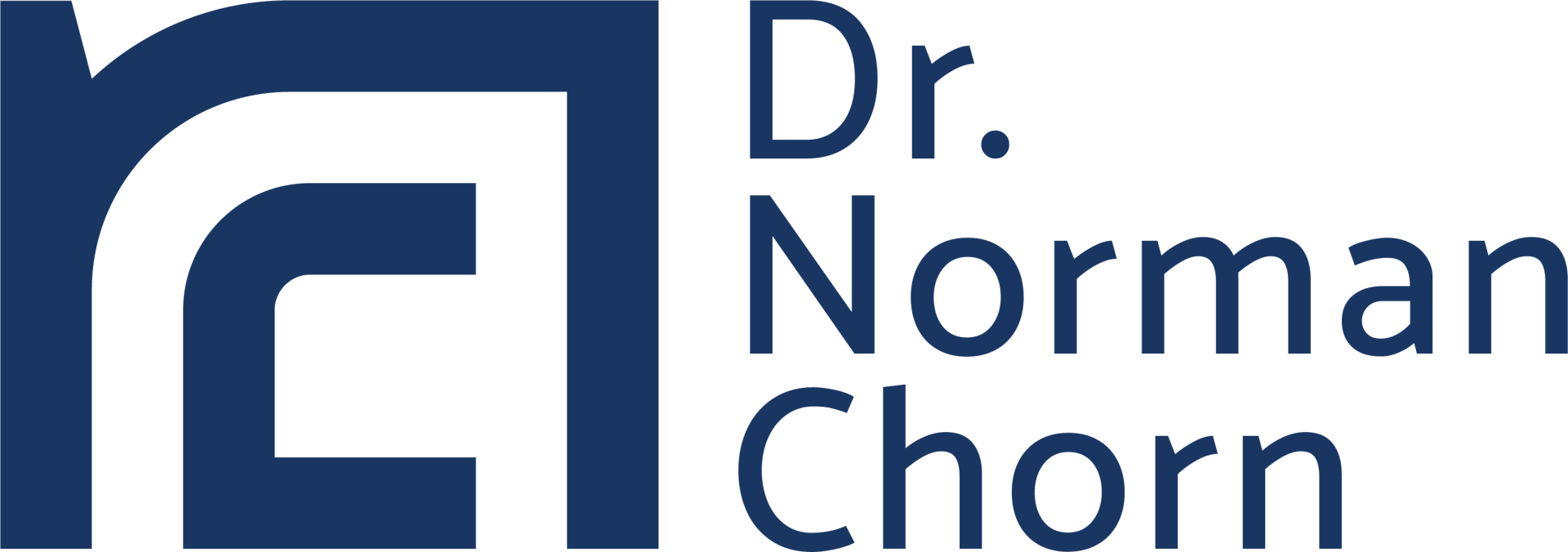In Part 1 "How to Accelerate Performance with Strategic Alignment - Understand the Logic of the Market" we outlined different market conditions and defined them in terms of two overarching logics — Exploring and Exploiting.
To briefly recap, an Exploring logic is one where customers are seeking new solutions for emerging needs. It’s all about change and action.
An Exploiting logic occurs in a more stable market in which the issues are about lowering costs and working collaboratively with customers.
It’s a market that focuses on stability and cohesion.
FORCES THAT SHAPE YOUR STRATEGY
Clearly, it is one of these two logics — or a combination of both — that will shape your strategy as you operate in these markets.
See figure 1 below that describes how these logics will form your business strategy:

The diagram outlines 4 distinct strategy types that regularly appear in competitive markets[1]. In each case, the strategy type is formed by a combination of the two logics described above.
Each of these types are described in further detail in table 2 below:

UNDERSTANDING THE STRATEGY TYPES
The table above shows that two of the strategies (Prospector) and (Defender) have highly focused logics, while the Analyser is a combination of logics achieved via a different organisation design. The Reactor is shown to be least viable form because it has little clear logic:
- The Prospector emphasises exploring new opportunities through innovation and a highly flexible, decentralised structure. It does not always excel in exploiting these opportunities but focuses on growth and creativity.
- The Defender emphasises stability and operational efficiency which is achieved by tight controls and standardised processes. It focuses very little on innovation and change but delivers steady earnings in its core market.
- The Analyser achieves a combination of both exploring and exploiting. However, this is NOT achieved by combining these characteristics into a single organisational form. Importantly, the exploring and exploiting focuses are achieved in separate business units, divisions or departments. In other words, an Analyser organisation needs to consider itself a portfolio of businesses — some focused on exploring, and others on exploiting. And the explore and exploit parts should be managed differently with different processes and KPIs.
- The Reactor is the least successful of these strategy types, largely because neither its strategy nor organisational form is clear and consistent. As we shall see in the final email in this series, the Reactor’s culture and strategy is too unstable for the development of capabilities and competencies that produce a competitive edge.
A KEY LESSON
Strategic success is achieved through focus — and focus is imbalance. A deliberate imbalance in resources and effort. The 3 successful types display this focus:
Prospector (high explore; Defender (high exploit); and Analyser (portfolio approach) all make deliberate tradeoffs to achieve this focus.
We will see how this is supported in Part 3, that focuses on culture and its alignment with strategy.
About Norman
Dr Norman Chorn is a highly experienced business strategist helping leaders build highly successful and resilient organisations. Well known to many as the ‘business doctor’!
By integrating the principles of neuroscience with strategy and economics Norman achieves innovative approaches to achieve peak performance within organisations.
Subscribe to our regular articles, insights and thought leadership




